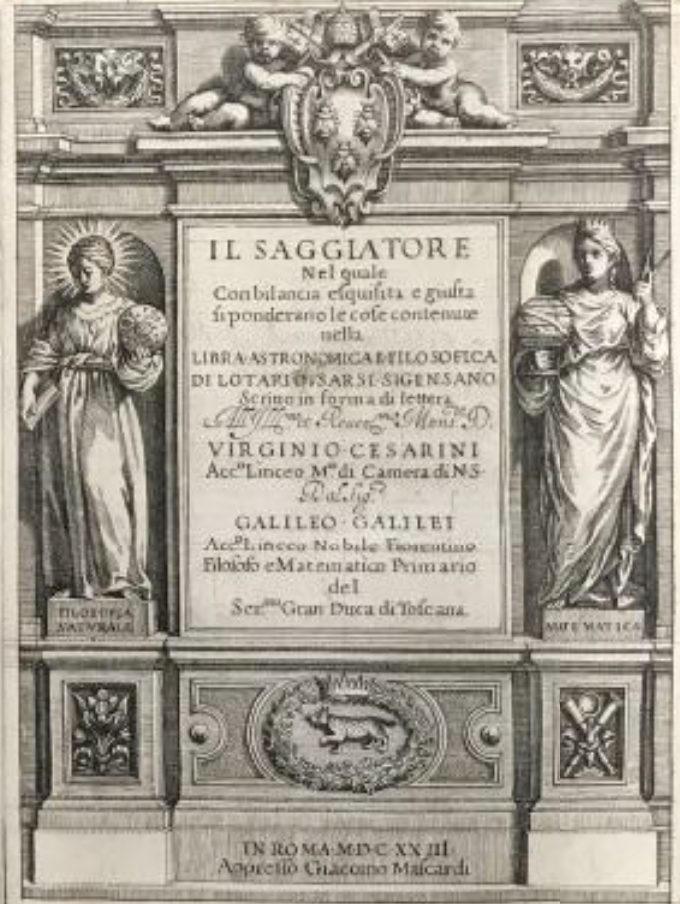
Galileo Galilei's The Assayer (Il Saggiatore; Rome, 1623) is a curious representation of intellectual culture. It is both highly stylized and fundamentally wrong in nearly all of the arguments it sets forth. But the language makes the wrong conclusions compelling. The banter between Galileo and his opponent in the debate is witty, fun, and layered with late Renaissance cultural ideals. It is a text about seeing and making use of observations in philosophical arguments, yet it is also a text about the deceptive power of words. This website combines both themes and allows us a way to see the words in their various contexts.
In early modern Italy, both innovation and skilled imitation determined the virtuosity of an author: new ideas in old forms or old forms transformed into novel vehicles for traditional ideas. Written and performed works were composed from a selection of rhetorical tools from diverse periods and genres meant to indicate cultural awareness, education, and the intellectual rigor necessary to gain patronage at a princely court. Innovative intellectual expression earned an author or thinker a place in academies, princely courts, and salons. Yet, skilled sampling and imitation were also expected in Galileo’s period: neither were discouraged practice or considered plagiarism. Early modern authors accessed linguistic and figurative models from the full range of written material to which they had access, whether it was prose, poetry, or theater. The visual examination of Il Saggiatore based on these features offers a way to see the communities of practice of early modern textual samplers within the environment of rampant borrowing in which Galileo was writing. We can experience the sound of Galileo’s prose, in a way, by identifying the patterns of word usage (and their ruptures) that would have been familiar to seventeenth century readers of Italian.
The need for this approach arises from an expanded definition of what it means for a text to be embedded in written culture. Style signifies more than discussion of archaic or contemporary topics, use of erudite or lay terminology, or even adoption of comedic or tragic tone. The visualizations in this online companion to The Assayer were inspired by projects that visualize structure ( The Petarchive), quantitative and contextual information (Voyant Tools), and adding metadata to terminology (Dante Visualized).
As a preliminary step, this site allows for visual, interactive exploration of X stylistic elements. The underlying data and code can be used to facilitate direct comparison with other early modern text. The patterns for Il Saggiatore can facilitate close reading and interpretation of individual sections or the work as a whole. The list below indicates a few questions that can be answered with the current visualizations, but the project is designed to be extensible so that more texts and contexts can be analyzed and compared.
Encoded layers of metadata about Il Saggiatore:
- Part of Speech: Where is Galileo's use of superlative adjectives most prevalent? Does he use adverbs?
- Tense: How often does Galileo use the subjunctive form of verbs? Are there certain topics that he discusses with minimal use of direct, declarative verb forms?
- Relative and Raw Frequency: How often does a word appear in the book? How often does the word appear in texts in Galileo's library?
- Oldest Use: What is the date of the oldest text in Galileo's library in which the word appears?
- Lexical Family: In what sections do certain metaphors appear (or not)? Do any metaphors repeat across the book?
- Texts: Where else in Galileo's library does the term appear? Is it rare? Common? Restricted to a certain type of book?